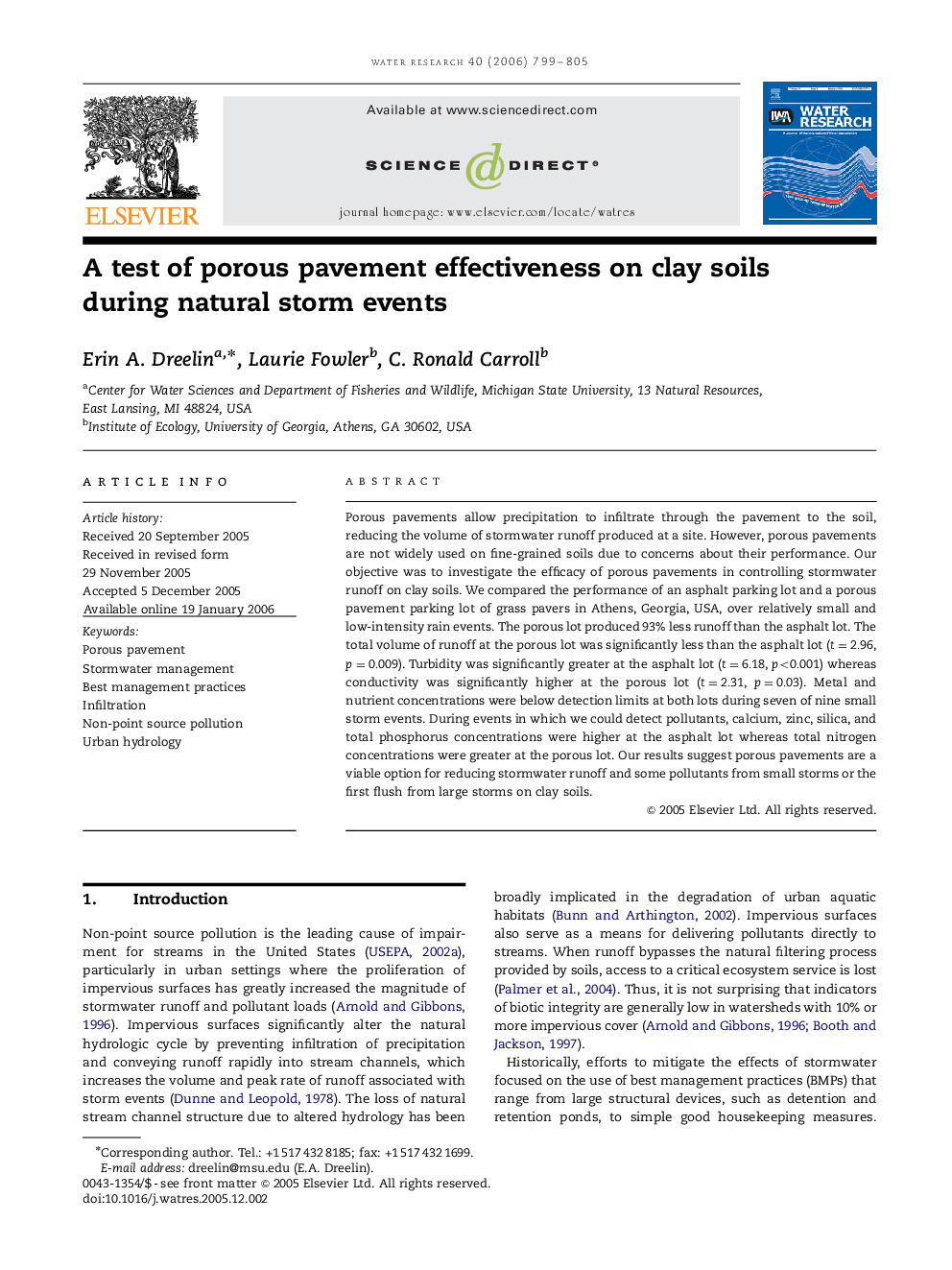| Article ID | Journal | Published Year | Pages | File Type |
|---|---|---|---|---|
| 4486805 | Water Research | 2006 | 7 Pages |
Porous pavements allow precipitation to infiltrate through the pavement to the soil, reducing the volume of stormwater runoff produced at a site. However, porous pavements are not widely used on fine-grained soils due to concerns about their performance. Our objective was to investigate the efficacy of porous pavements in controlling stormwater runoff on clay soils. We compared the performance of an asphalt parking lot and a porous pavement parking lot of grass pavers in Athens, Georgia, USA, over relatively small and low-intensity rain events. The porous lot produced 93% less runoff than the asphalt lot. The total volume of runoff at the porous lot was significantly less than the asphalt lot (t=2.96t=2.96, p=0.009p=0.009). Turbidity was significantly greater at the asphalt lot (t=6.18t=6.18, p<0.001p<0.001) whereas conductivity was significantly higher at the porous lot (t=2.31t=2.31, p=0.03p=0.03). Metal and nutrient concentrations were below detection limits at both lots during seven of nine small storm events. During events in which we could detect pollutants, calcium, zinc, silica, and total phosphorus concentrations were higher at the asphalt lot whereas total nitrogen concentrations were greater at the porous lot. Our results suggest porous pavements are a viable option for reducing stormwater runoff and some pollutants from small storms or the first flush from large storms on clay soils.
